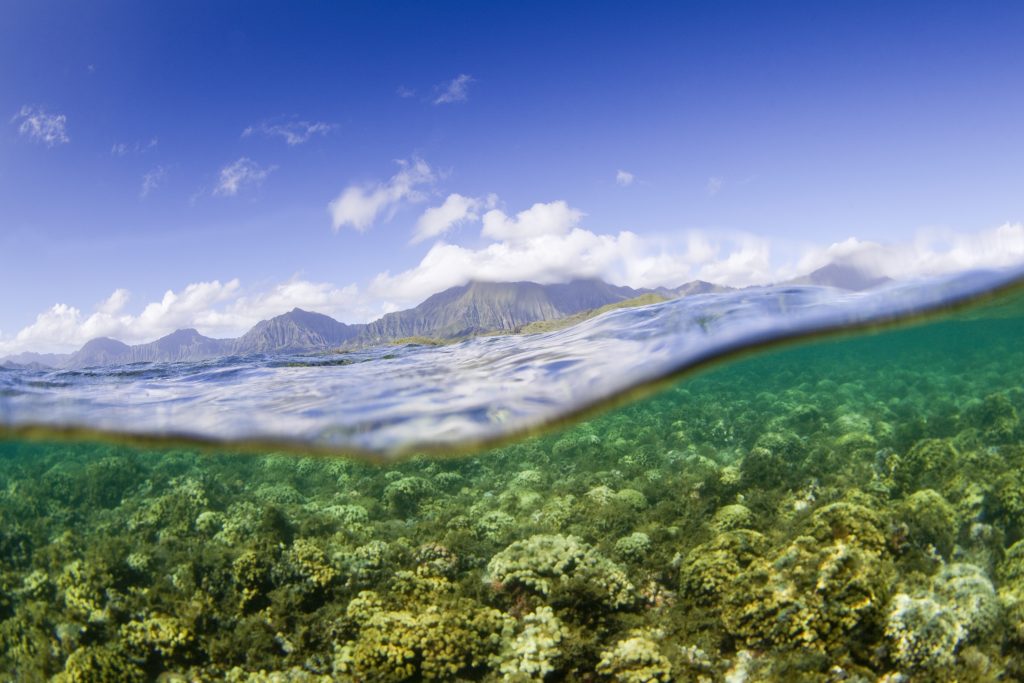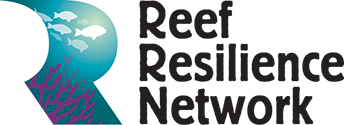Invasive Species
Invasive species can cause severe and lasting damage to the habitats they invade by reducing the abundance of native species as well as altering ecosystem structure and processes. In addition to such environmental impacts, invasive species can also result in economic losses to local communities and industries.

Coral patch covered in invasive algae in Hawai‘i. Photo © Ian Shive
There are four main approaches involved in managing invasive species:
Prevention is the first and best line of defense in the management of invasive species. To prevent the introduction of invasive species, it is important to understand how invasive species are transported and introduced. The most common pathways of introduction include ballast water, biofouling of ship hulls, and release of unwanted pets and fishing bait. At a regional or country-level, policies and codes of practice should be in place to reduce the risk of introductions through the most common pathways of introduction.
In recognizing that ship movements are a major source of species invasions, there are a number of standards and best-practice approaches that can be used to reduce risks to coral reefs. For example, Marine Biofouling and Invasive Species: Guidelines for Prevention and Management includes best management practices for ensuring anti-fouling measures are applied to vessels, border control measures of risk assessment, in-water cleaning programs, facilities, and disposal measures.
Ecosystem monitoring should be conducted in a timely and systematic manner in order to detect introductions early enough that a rapid response is feasible. Often the only way to successfully eradicate an invasive species is to act very early in the invasion process before an infestation becomes widespread. Early detection efforts require resources, planning, and coordination. Invasive species are often detected by chance, but trained individuals and personnel also detect them through targeted invasive species surveys and by monitoring specific, high-risk areas. Community monitoring networks can also provide important information about changes in reef condition.
For example, Hawai‘i’s Eyes of the Reef Network engages communities in the monitoring and reporting of marine invasive species and other reef stressors such as coral bleaching, disease, and predator outbreaks.
Once established, invasive species can be very difficult to eradicate, especially in highly connected systems such as coral reefs. However, the ecological impacts of an invasive species may justify efforts to control further spread and manage established populations to minimize damage or allow native species to recover. In general, a strategic plan is used to control chronic invasions.
For example, lionfish control programs are in place throughout the Caribbean. In the Florida Keys National Marine Sanctuary, special lionfish removal permits are now issued for collection of lionfish from Sanctuary Preservation Areas (SPAs), which are otherwise no-fishing, no-take zones. In other parts of the Caribbean, such as the Cayman Islands, programs have focused on encouraging local fishers to catch lionfish and encourage a market for lionfish through education campaigns, including brochures explaining how to safely handle and prepare lionfish.
Restoring ecosystems may be necessary if it has not been possible to prevent ecological damage by an invasive species. Restoration is labor intensive and expensive, so should not be implemented unless the threat from invasive species has been reduced to insignificant levels.
For more in-depth information, take the Coral Reef Resilience Online Course on coral reef restoration. Read a description of the course or enroll in the course.
